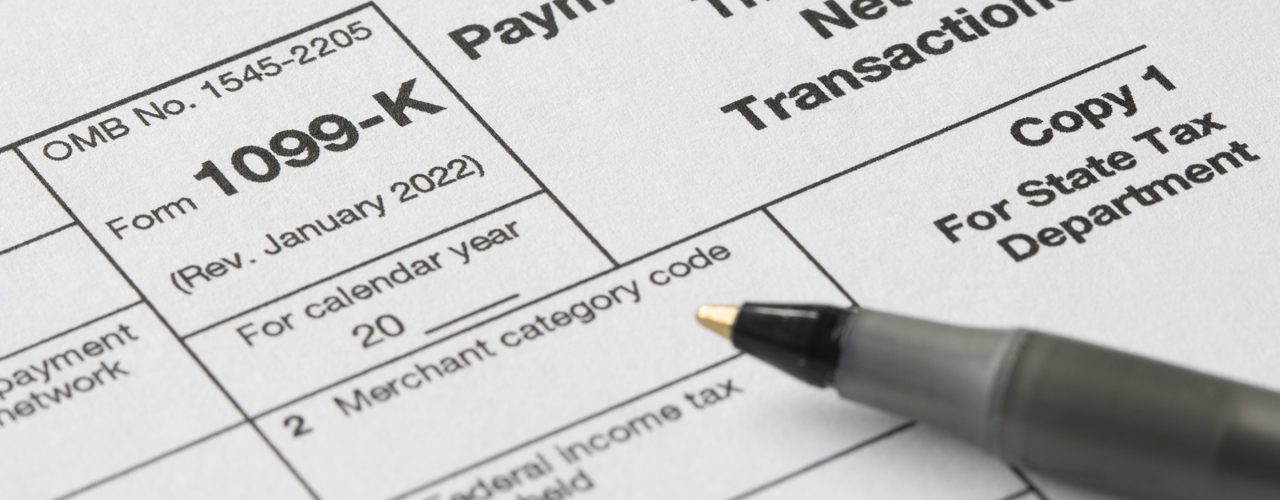The 1099-K is not new — in fact, the IRS has used the tax form since 2012. But many taxpayers had never heard of it until early 2021. And since then, it has received an outsized amount of national buzz, has come to the attention of many more taxpayers than ever before … and has created a good bit of anxiety among many of them.
So just what is the 1099-K, and why has it suddenly become so well-known? Read on to learn more about this tax document formally known as “Form 1099-K: Payment Card and Third Party Network Transactions” — and why it could soon matter a lot more to you.
What is a 1099-K tax form?
The IRS uses Form 1099-K to get a picture of how much income businesses and individuals are taking in via online platforms, apps, and companies that process electronic payments made via credit or debit cards. It’s geared toward taxpayers with a small business or a side job who use a payment app like Venmo or PayPal to collect money from customers or who sell products on e-commerce sites like eBay, Etsy, Poshmark, and Decluttr. Those taxpayers will receive a 1099-K form from the applicable third-party company if their transactions with the service meet the 1099-K reporting requirements/thresholds.
Why has it caused such a stir recently?
The passage of the American Rescue Plan of Act 2021 brought a 1099-K threshold change, along with some changes to who gets a 1099-K form during each tax season. Before the act was passed, the threshold for when a 1099-K form had to be sent to a taxpayer was 200 transactions and/or the collection of $20,000 in payments. But the act’s passage brought 1099-K changes that reduced the threshold dramatically to just $600 — and even just one transaction exceeding that amount can trigger the requirement that a 1099-K form be sent.
The introduction of the new 1099-K reporting threshold created a lot of confusion (and a good bit of misinformation and worry) among American taxpayers. Perhaps most prominently among the public misunderstandings of/concerns about the changes, the law was widely interpreted to include personal payments and money transfers on apps like Venmo and PayPal in the amount of funding a person must receive before the IRS-reporting threshold is reached. This would likely leave many taxpayers wondering, “Why did I receive a 1099-K?” for actions such as using Venmo or PayPal to send a family member reimbursement for covering a vacation rental or to repay a friend who picked up an entire dinner tab. (The law is actually meant to apply only to business transactions, such as payments for selling goods and/or services.)
The 1099-K’s new-requirement delay
Largely as a result of the pervasive confusion mentioned above, the IRS announced in late 2022 that implementation of the new $600 threshold for 1099-K reporting would be delayed in an effort to “help smooth the transition and ensure clarity.” So, for tax year 2022 (filed in 2023), the previous year’s threshold of $20,000 in payments and/or 200 total transactions applied. And as a result, many taxpayers who would likely have received 1099-K forms in 2023 (for tax year 2022) under the new rules did not receive them.
What lies ahead for the new 1099-K requirements?
Time will tell if future changes are made to the 1099-K form reporting requirements. Tax professionals remind all taxpayers that business payments are still subject to taxes – and taxpayers should continue to maintain organized records related to their business income. Wondering what to do if you receive a 1099-K form in early 2024? At Security Finance, our experienced team is here to provide reliable and accurate tax prep services and to help you get the maximum refund legally allowed by the IRS. We offer a variety of product options to help your tax season go smoothly.
Schedule an appointment for our in-branch and curbside tax services today.
